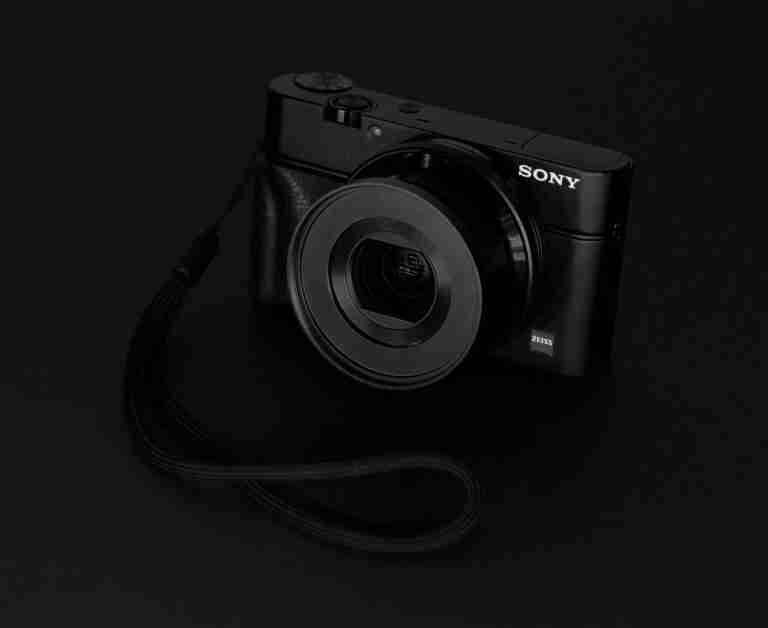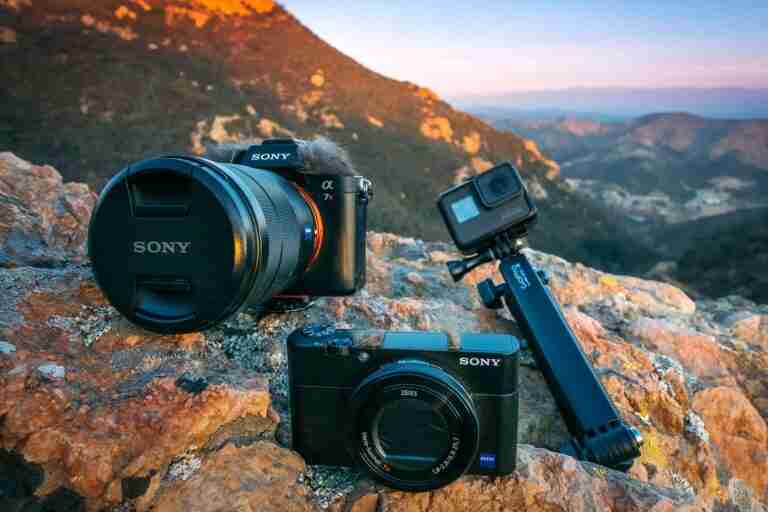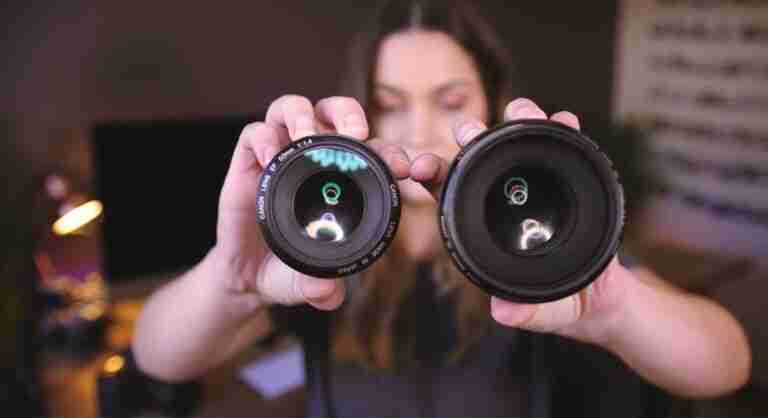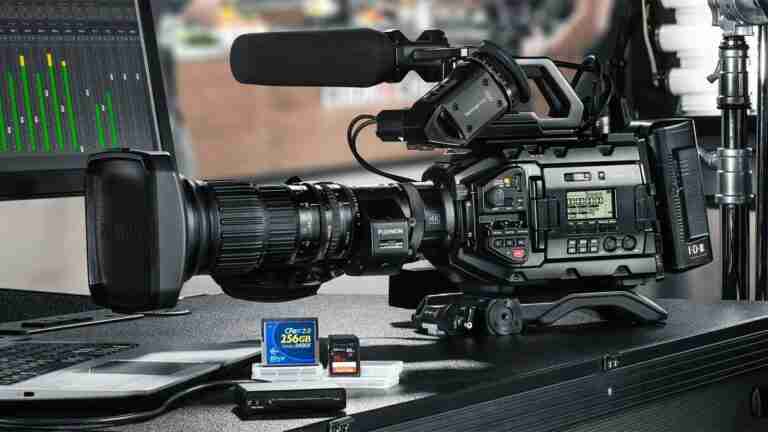25 Best Cameras for Live Streaming
If you are one of those searching for the best cameras for live streaming, you are fortunate. We will help you find what you are looking for by sharing extensive information with you. Live streaming has become a popular way to connect with people, share stories, and do business.
Whether you’re a YouTuber or a corporate event producer, having the right camera can make all the difference between a great broadcast and a poor one. But with so many cameras on the market, it can be difficult to choose the right one.
Fortunately, we’ve done the research for you to find the 25 best cameras for live streaming. We’ve compared features, price, and reviews to find the perfect fit for your live streaming needs. Whether you need a top-of-the-line camera or are looking for something on a budget, there’s sure to be something here for you.
Before diving into the specifics, let’s examine the features that you will want to consider when shopping for a live streaming camera.
Contents
- Features to Look for in the Best Cameras for Live Streaming
- List of the 25 Best Cameras for Live Streaming
- Sony Alpha A7 III
- Canon EOS R
- Panasonic Lumix GH5
- Canon EOS M6 Mark II
- Panasonic Lumix G95
- Sony Alpha A6400
- Nikon Z6
- Olympus OM-D E-M1 Mark III
- Nikon Z50
- Fujifilm X-T4
- Canon EOS M50
- Sony Alpha A6000
- Blackmagic Pocket 4K
- Panasonic Lumix GH5S
- Sony Alpha A7s II
- Canon EOS 90D
- Panasonic Lumix GX85
- Fujifilm X-T3
- Panasonic Lumix G85
- Sony Alpha A5100
- Canon EOS 200D
- Nikon D7500
- Sony Alpha A99 II
- Sony ZV-E10
- GoPro Hero 10
- Final Thoughts on the Best Cameras for Live Streaming
Features to Look for in the Best Cameras for Live Streaming
No matter the budget, you will want to consider optics, autofocus, signal latency, and other features when selecting a camera for live streaming.
Optics: Optics are an important feature to consider when choosing a live streaming camera. You will want a lens that produces sharp images and a wide angle to capture as much of the scene as possible. You should also consider the size and type of sensor, as this will determine how much light is captured by the camera.
Autofocus: Autofocus is important when filming events or interviews, as the camera must quickly adjust to changes in the scene. Many cameras come with autofocus, but some may require manual focus adjustments. Make sure the camera you select has an autofocus that meets your needs.
Signal Latency: Signal latency is the time difference between when the camera captures an image and when it is displayed on the screen. You want the latency to be as low as possible (ideally zero), as this will ensure that the images and words being spoken are synchronized.
List of the 25 Best Cameras for Live Streaming
Live streaming has become increasingly popular in recent years, as it allows people to share events, media, and content with friends and family all over the world in real time. It‘s important to have quality streaming with clear visuals, so for this reason, it‘s important to invest in a good camera for best results.
There are numerous options when it comes to choosing the best camera for live streaming, from portable camcorders to high–end DSLRs, and all have different features that may suit different budgets or scenarios. It is worthwhile to research different models before making a purchase, in order to find the best camera for your needs.
This guide will provide an overview of the best cameras for live streaming, looking at their features and providing a brief overview of each model. Now that we’ve outlined what you need to consider when buying a live streaming camera, let’s take a look at our list of the 25 best cameras for live streaming.
Sony Alpha A7 III
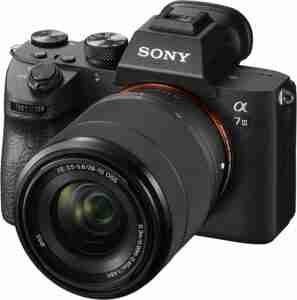
The Sony Alpha A7 III is a full-frame camera that comes with a 24.2-megapixel Exmor R CMOS sensor, 4K/30p video recording and a BIONZ X processor. It also boasts 5-axis image stabilization, a Fast Hybrid autofocus, and a 2.36 million dot OLED viewfinder.
Features: 24.2-megapixel full-frame sensor, 4K/30p video recording, 5-axis image stabilization, Fast Hybrid autofocus.
Pros: Great image quality, fast autofocus, good battery life.
Cons: Pricey, relatively low resolution viewfinder.
Canon EOS R
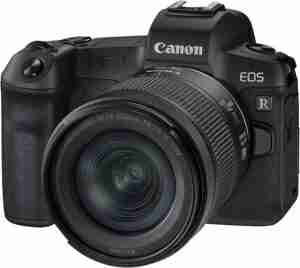
The Canon EOS R is a full-frame model that comes with a 30.3-megapixel CMOS sensor, 4K/30p video capture and a Digic 8 processor. It has Dual Pixel autofocus, a 2.1 million dot EVF, and 5-axis image stabilization.
Features: 30.3-megapixel full-frame sensor, 4K/30p video capture, Dual Pixel autofocus.
Pros: Excellent image quality, fast autofocus, 5-axis image stabilization.
Cons: Expensive, no in-body image stabilization on the body.
Panasonic Lumix GH5
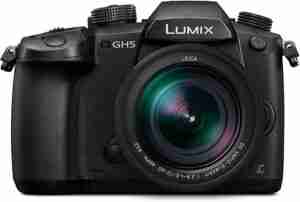
The Panasonic Lumix GH5 is a mirrorless camera that features a 20.3-megapixel Four Thirds sensor, 4K/60p video capture and a Venus Engine processor. It has a 225-area autofocus system, 5-axis image stabilization and a 3.68 million dot OLED viewfinder.
Features: 20.3-megapixel Four Thirds sensor, 4K/60p video capture, 5-axis image stabilization, 225-area autofocus.
Pros: Fast autofocus, excellent image quality, great in-body image stabilization.
Cons: No full-frame sensor, lower resolution viewfinder.
Canon EOS M6 Mark II
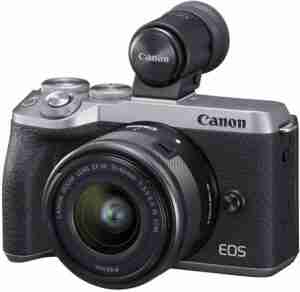
The Canon EOS M6 Mark II is a mirrorless camera that comes with a 32.5-megapixel APS-C sensor, 4K/30p video recording and a DIGIC 8 processor. It has a dual pixel autofocus system, a 2.36 million dot EVF and 5-axis image stabilization.
Features: 32.5-megapixel APS-C sensor, 4K/30p video recording, dual pixel autofocus.
Pros: Excellent image quality, fast autofocus, good battery life.
Cons: No full-frame sensor, no in-body image stabilization.
Panasonic Lumix G95
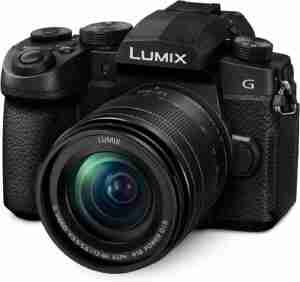
The Panasonic Lumix G95 is a Micro Four Thirds camera with a 20.3-megapixel sensor, 4K/30p video recording and a Venus Engine processor. It has a 225-area autofocus system, 5-axis image stabilization and a 3.68 million dot OLED viewfinder.
Features: 20.3-megapixel Micro Four Thirds sensor, 4K/30p video recording, 5-axis image stabilization, 225-area autofocus.
Pros: Fast autofocus, excellent image quality, great in-body image stabilization.
Cons: No full-frame sensor, lower resolution viewfinder.
Sony Alpha A6400
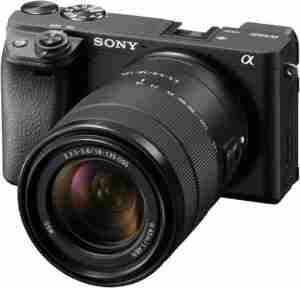
The Sony Alpha A6400 features a 24.2-megapixel Exmor CMOS sensor, 4K/30p video capture and a BIONZ X processor. It has a 425-point hybrid autofocus system, 5-axis image stabilization and a 2.36 million dot OLED viewfinder.
Features: 24.2-megapixel Exmor CMOS sensor, 4K/30p video recording, 425-point hybrid autofocus.
Pros: Fast autofocus, excellent image quality, 5-axis image stabilization.
Cons: No full-frame sensor, relatively low resolution viewfinder.
Nikon Z6

The Nikon Z6 is a full-frame camera that comes with a 24.5-megapixel BSI-CMOS sensor, 4K/30p video capture and an X-Processor 4 processor. It has 273-point hybrid autofocus, a 3.69 million dot OLED viewfinder and 5-axis image stabilization.
Features: 24.5-megapixel BSI-CMOS sensor, 4K/30p video capture, 273-point hybrid autofocus.
Pros: Excellent image quality, fast autofocus, good battery life.
Cons: Pricey, no in-body image stabilization on the body.
Olympus OM-D E-M1 Mark III
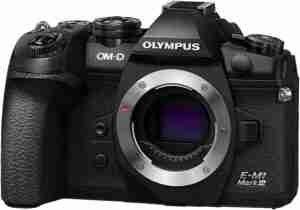
The Olympus OM-D E-M1 Mark III is a Micro Four Thirds camera that features a 20.4-megapixel Live MOS sensor, 4K/30p video recording and a TruePic IX processor. It has a 121-point all-cross-type autofocus system, 5-axis image stabilization and a 2.36 million dot OLED viewfinder.
Features: 20.4-megapixel Live MOS sensor, 4K/30p video recording, 121-point all-cross-type autofocus.
Pros: Excellent image quality, fast autofocus, great in-body image stabilization.
Cons: No full-frame sensor, lower resolution viewfinder.
Nikon Z50

The Nikon Z50 is a mirrorless camera that comes with a 20.9-megapixel CMOS sensor, 4K/30p video capture and an Expeed 6 processor. It has a 209-point hybrid autofocus system, a 2.36 million dot OLED viewfinder and 5-axis image stabilization.
Features: 20.9-megapixel CMOS sensor, 4K/30p video recording, 209-point hybrid autofocus.
Pros: Fast autofocus, excellent image quality, good battery life.
Cons: No full-frame sensor, no in-body image stabilization.
Fujifilm X-T4
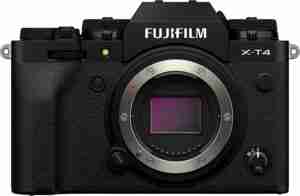
The Fujifilm X-T4 is a mirrorless camera that features a 26.1-megapixel X-Trans CMOS 4 sensor, 4K/60p video recording and a X-Processor 4 processor. It has a 425-point hybrid autofocus system, a 3.69 million dot OLED viewfinder and 5-axis image stabilization.
Features: 26.1-megapixel X-Trans CMOS 4 sensor, 4K/60p video recording, 425-point hybrid autofocus.
Pros: Fast autofocus, excellent image quality, good battery life.
Cons: Expensive, no in-body image stabilization on the body.
Canon EOS M50
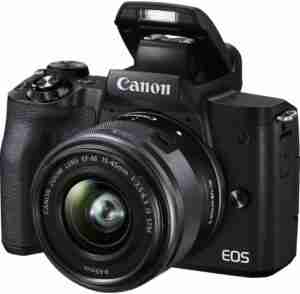
The Canon EOS M50 is an entry-level mirrorless camera that comes with a 24.1-megapixel APS-C CMOS sensor, 4K/24p video recording and a DIGIC 8 processor. It has a 171-point autofocus system, a 2.36 million dot OLED viewfinder and 5-axis image stabilization.
Features: 24.1-megapixel APS-C CMOS sensor, 4K/24p video recording, 171-point autofocus.
Pros: Fast autofocus, excellent image quality, great in-body image stabilization.
Cons: No full-frame sensor, lower resolution viewfinder.
Sony Alpha A6000
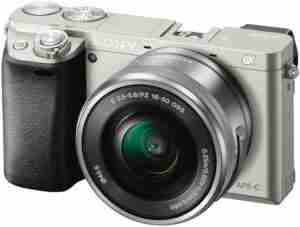
The Sony Alpha A6000 is an entry-level mirrorless camera that features a 24.3-megapixel APS-C Exmor CMOS sensor, Full HD/60p video capture and a BIONZ X processor. It has a 179-point hybrid autofocus system, a 1.44 million dot OLED viewfinder and 5-axis image stabilization.
Features: 24.3-megapixel APS-C Exmor CMOS sensor, Full HD/60p video recording, 179-point hybrid autofocus.
Pros: Fast autofocus, excellent image quality, 5-axis image stabilization.
Cons: No full-frame sensor, relatively low resolution viewfinder.
Blackmagic Pocket 4K
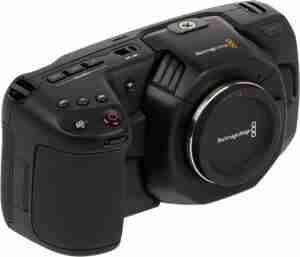
The Blackmagic Pocket 4K is a mirrorless camera that comes with a four-thirds sensor, 4K/60p video capture and an ISO range of up to 25,600. It has an EF lens mount, an autofocus system and an OLED viewfinder.
Features: Four-thirds sensor, 4K/60p video recording, EF lens mount, autofocus system.
Pros: Excellent video quality, fast autofocus, good in-body image stabilization.
Cons: No full-frame sensor, limited control options.
Panasonic Lumix GH5S
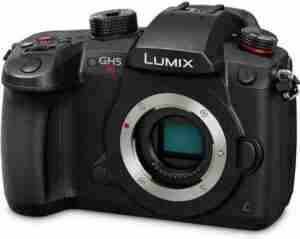
The Panasonic Lumix GH5S is a mirrorless camera that features a 10.2-megapixel Four Thirds sensor, 4K/60p video recording and a Venus Engine processor. It has a 225-area autofocus system, a 3.68 million dot OLED viewfinder and 5-axis image stabilization.
Features: 10.2-megapixel Four Thirds sensor, 4K/60p video recording, 225-area autofocus.
Pros: Fast autofocus, excellent video quality, great in-body image stabilization.
Cons: No full-frame sensor, lower resolution viewfinder.
Sony Alpha A7s II
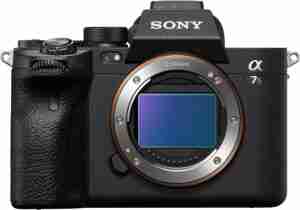
The Sony Alpha A7s II is a full-frame camera that comes with a 12.2-megapixel Exmor CMOS sensor, 4K/30p video capture and a BIONZ X processor. It has a Fast Hybrid autofocus system, a 2.36 million dot XAVC-S viewfinder and 5-axis image stabilization.
Features: 12.2-megapixel Exmor CMOS sensor, 4K/30p video capture, Fast Hybrid autofocus.
Pros: Fast autofocus, excellent image quality, 5-axis image stabilization.
Cons: Pricey, relatively low resolution viewfinder.
Canon EOS 90D

The Canon EOS 90D is a DSLR that features a 32.5-megapixel APS-C CMOS sensor, 4K/30p video recording and a DIGIC 8 processor. It has a 45-point all-cross type autofocus system, a 1.62 million dot OLED viewfinder and 5-axis image stabilization.
Features: 32.5-megapixel APS-C CMOS sensor, 4K/30p video recording, 45-point all-cross type autofocus.
Pros: Fast autofocus, excellent image quality, great in-body image stabilization.
Cons: No full-frame sensor, lower resolution viewfinder.
Panasonic Lumix GX85
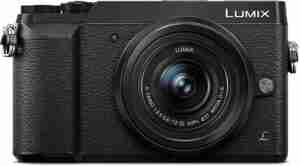
The Panasonic Lumix GX80 / GX85 is a Micro Four Thirds camera with a 16-megapixel Live MOS sensor, 4K/30p video recording and a Venus Engine processor. It has a Contrast-detect autofocus system, 5-axis image stabilization and a 2.36 million dot OLED viewfinder.
Features: 16-megapixel Live MOS sensor, 4K/30p video recording, Contrast-detect autofocus.
Pros: Fast autofocus, excellent image quality, good battery life.
Cons: No full-frame sensor, no in-body image stabilization.
Fujifilm X-T3
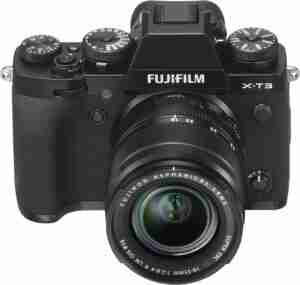
The Fujifilm X-T3 is a mirrorless camera that features a 26.1-megapixel X-Trans CMOS 4 sensor, 4K/60p video recording and an X-Processor 4 processor. It has a 425-point hybrid autofocus system, a 3.69 million dot OLED viewfinder and 5-axis image stabilization.
Features: 26.1-megapixel X-Trans CMOS 4 sensor, 4K/60p video recording, 425-point hybrid autofocus.
Pros: Fast autofocus, excellent image quality, good battery life.
Cons: Expensive, no in-body image stabilization on the body.
Panasonic Lumix G85

The Panasonic Lumix G85 is a Micro Four Thirds camera with a 16-megapixel Live MOS sensor, 4K/30p video recording and a Venus Engine processor. It has a 225-area autofocus system, 5-axis image stabilization and a 3.68 million dot OLED viewfinder.
Features: 16-megapixel Live MOS sensor, 4K/30p video recording, 225-area autofocus.
Pros: Fast autofocus, excellent video quality, great in-body image stabilization.
Cons: No full-frame sensor, lower resolution viewfinder.
Sony Alpha A5100
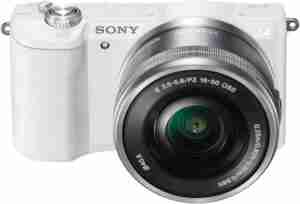
The Sony Alpha A5100 is an entry-level mirrorless camera that comes with a 24.3-megapixel APS-C Exmor CMOS sensor, Full HD/60p video capture and a BIONZ X processor. It has a 179-point hybrid autofocus system, a 1.44 million dot OLED viewfinder and 5-axis image stabilization.
Features: 24.3-megapixel APS-C Exmor CMOS sensor, Full HD/60p video recording, 179-point hybrid autofocus.
Pros: Fast autofocus, excellent image quality, 5-axis image stabilization.
Cons: No full-frame sensor, relatively low resolution viewfinder.
Canon EOS 200D
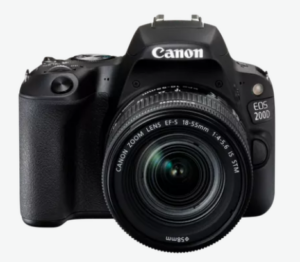
The Canon EOS 200D is a DSLR that features a 24.1-megapixel APS-C CMOS sensor, 4K/25p video recording and a DIGIC 7 processor. It has a 45-point all-cross-type autofocus system, a 1.04 million dot OLED viewfinder and 5-axis image stabilization.
Features: 24.1-megapixel APS-C CMOS sensor, 4K/25p video recording, 45-point all-cross-type autofocus.
Pros: Fast autofocus, excellent image quality, great in-body image stabilization.
Cons: No full-frame sensor, lower resolution viewfinder.
Nikon D7500
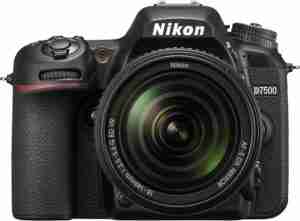
The Nikon D7500 is a DSLR that comes with a 20.9-megapixel CMOS sensor, 4K/30p video capture and an Expeed 5 processor. It has a 51-point autofocus system, a 3.2 million dot OLED viewfinder and 5-axis image stabilization.
Features: 20.9-megapixel CMOS sensor, 4K/30p video recording, 51-point autofocus.
Pros: Fast autofocus, excellent image quality, good battery life.
Cons: No full-frame sensor, no in-body image stabilization.
Sony Alpha A99 II
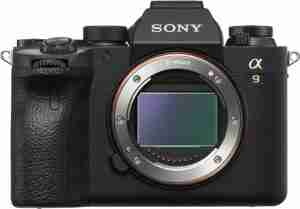
The Sony Alpha A99 II is a full-frame camera that features a 42.4-megapixel Exmor R CMOS sensor, 4K/30p video recording and a BIONZ X processor. It has a Hybrid autofocus system, a 2.36 million dot OLED viewfinder and 5-axis image stabilization.
Features: 42.4-megapixel Exmor R CMOS sensor, 4K/30p video recording, Hybrid autofocus.
Pros: Fast autofocus, excellent image quality, 5-axis image stabilization.
Cons: Pricey, relatively low resolution viewfinder.
Sony ZV-E10
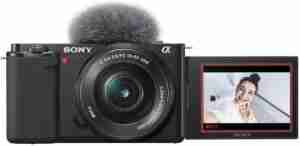
The Sony ZV-E10 is a digital video camera that has a wide range of features. It features a 1/5.5-inch CCD with an aspect ratio of 4:3 and a 10x optical zoom lens. The image is recorded in a 16-bit/48-kHz linear PCM format. It has an adjustable white balance and digital image stabilization for better image quality. It also has manual audio balance and sound level controls for better sound quality. The camera has a miniature USB interface for quick transfer and downloading of data.
Features: 24.2MP APS-C Exmor CMOS Sensor, fast BIONZ X processor, no pixel binning.
Pros: Fast autofocus, excellent image quality, Wide lens selection with versatile E-mount system.
Cons: Expensive, Poor white balance feature.
GoPro Hero 10
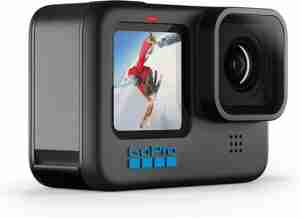
The GoPro Hero 10 is the latest offering from GoPro, and it’s packed with features that are sure to impress. This new action cam has an upgraded camera that can record up to 4K60 video, and take pictures with a resolution of 12mp. It offers a wide range of features, such as Night, Time-Lapse and Hyperlapse modes, an improved stabilization system and even a live streaming feature. All these features are designed to help you capture video and pictures with impressive quality.
Features: 12-megapixel reoslution, Time lapse, Hyperlapse modes.
Pros: Improved stabilization, excellent image quality, live streaming feature.
Cons: Expensive and exposed SD card slot.
Final Thoughts on the Best Cameras for Live Streaming
Our list of the 25 best cameras for live streaming offer a good range of quality and cost options for whatever your budget or needs may be. Not only do these cameras provide crystal clear streaming, but they also offer features like audio and lighting help, programmable settings, and some even have a built-in stand.
Whether you’re a professional vlogger or just starting out, it’s important to find a quality camera for live streaming. When you’re trying to find the best camera for live streaming, make sure to consider your own streaming needs and budget. Chances are you’ll find one of these cameras just right for your needs.
- What Cameras Can You Use on PS5? A Compatibility Guide in 2024 - January 14, 2024
- What Cameras Support Windows Hello? A Guide to Compatible Devices - January 13, 2024
- 11 Best Cameras For Security With Night Vision In 2024 - August 9, 2023



